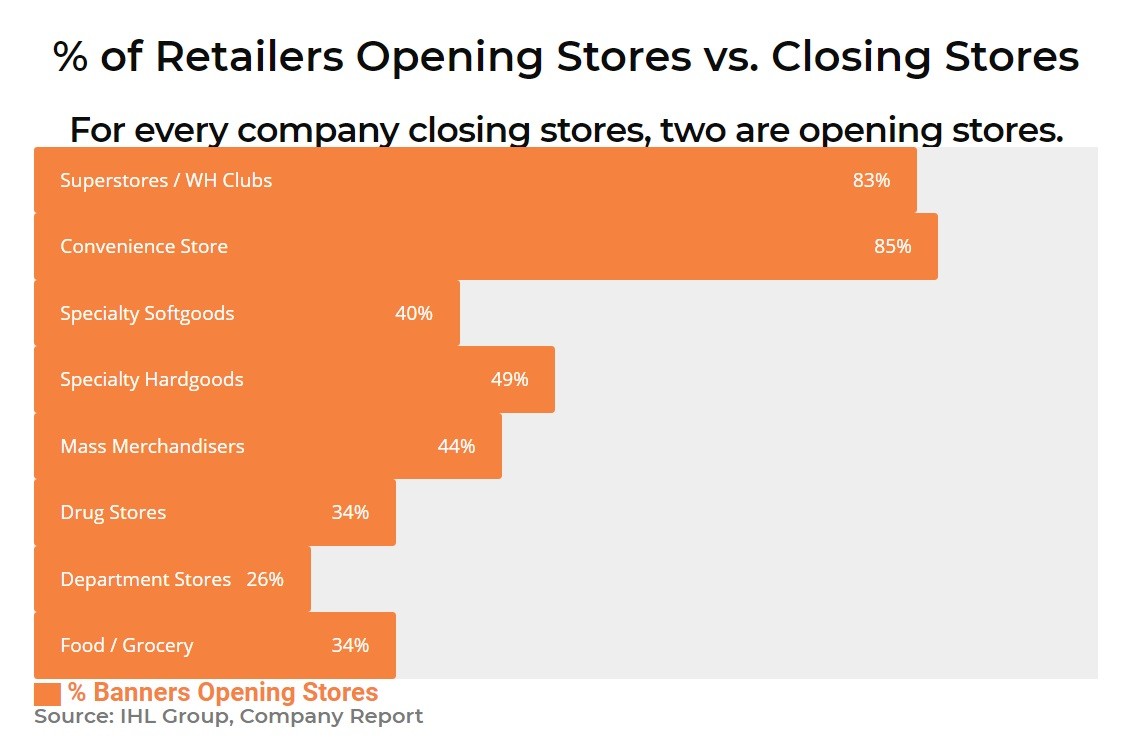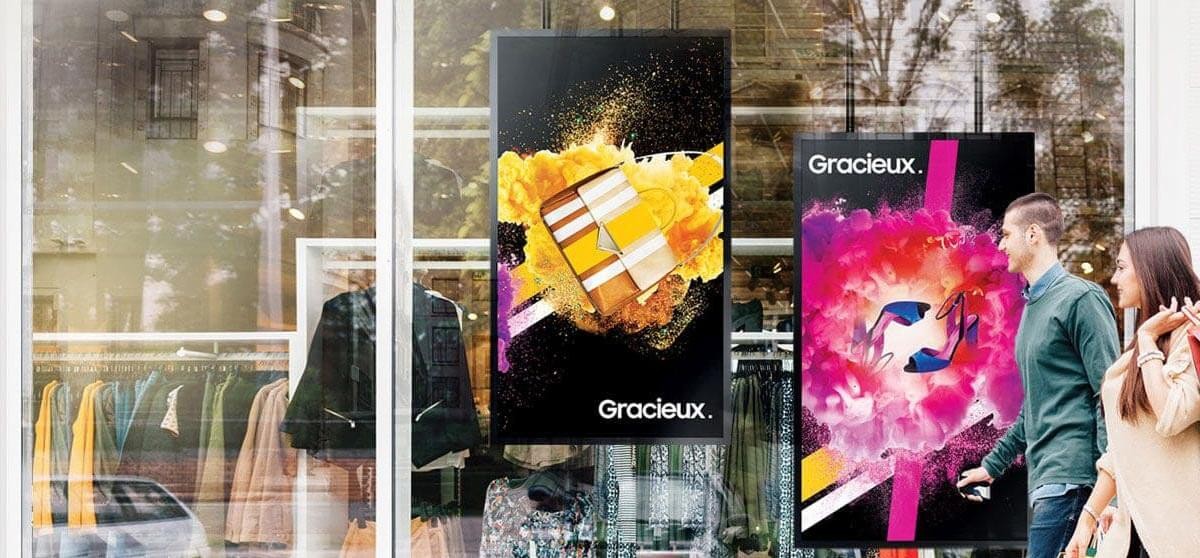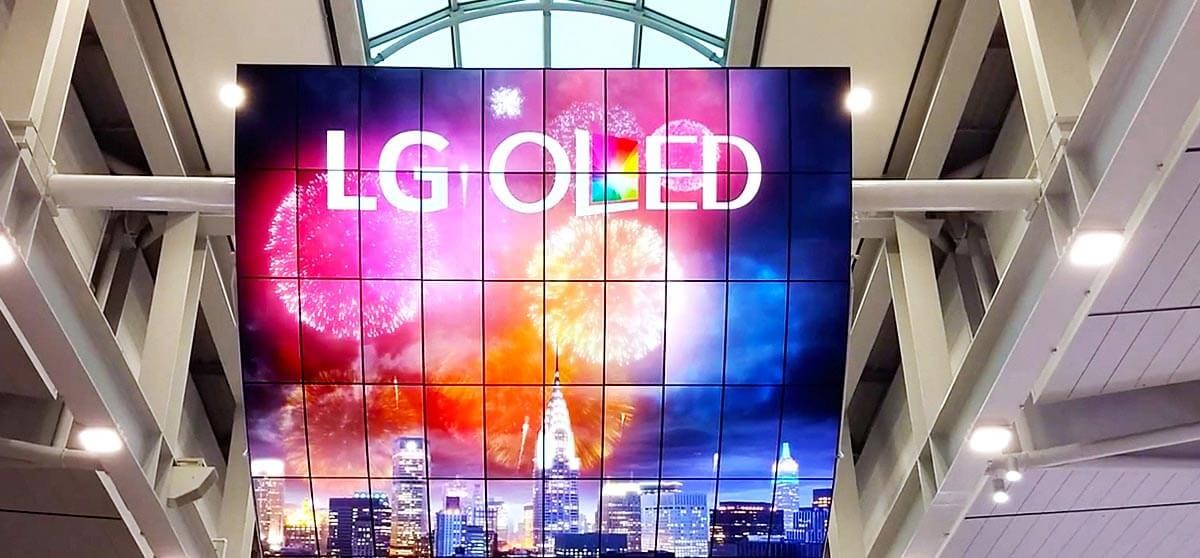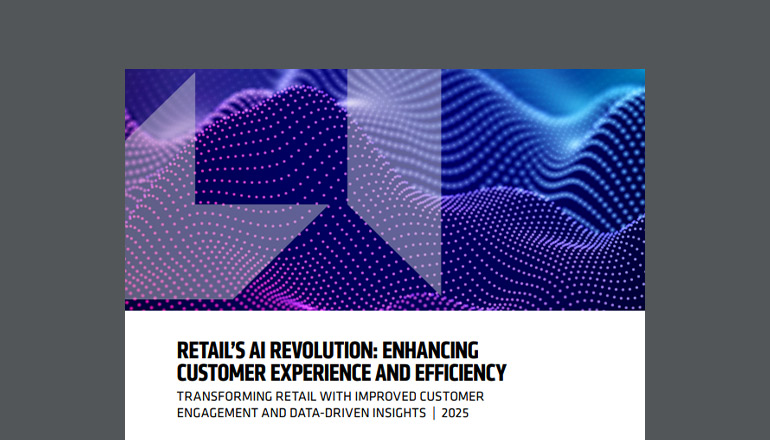Tech Journal The Next Generation Digital Canvas
By Dan Schneider / 18 Sep 2019 / Topics: Customer experience

How to take advantage of the change in visual displays and capitalize on consumer interaction
For many years, the market has had a gloomy forecast for brick and mortar retail and the role that online retailing would play in negatively impacting store growth. In retrospect, these forecasts of decline overall have not proven true. We have seen a hybridization of online and retail presence, such as the acquisition of Whole Foods by Amazon, and e-commerce vendors opening physical store locations. Traditional department stores have lost footprint and have struggled to maintain relevance within a newer generation of buyers, but overall, physical retail has grown.
In fact, according to the National Retail Federation, in 2018 retail was growing faster than the economy in general. A report generated by the IHL Group showed that for every company that was closing a store, two more stores were opening. This report projected that physical brick and mortar stores would be involved in 81 percent of all retail sales in 2021, citing several segments of retail that are increasing the number of stores in their footprint.
81%
Cited that physical brick and mortar stores will be involved in all retail sales in 2021
According to researchers, one of the key factors that accounts for this change is that Millennials and Gen Z consumers have a preference for shopping in brick and mortar locations. A recent study conducted by Oracle NetSuite showed that these two generation segments have increased the rate of in-store purchasing far more than Gen X and Baby Boomers. One very interesting factor this research is that some age segments don’t enjoy interacting with retail associates, while older generations tend to feel more welcome with interaction and assistance.
What does this mean for businesses? Attention to digital strategy and reinventing stores to integrate omnichannel interactions will be key to success, as these factors greatly impact the quality of the customer experience and the time a customer spends within your establishment.

New technology, new experiences
For many years, consumer engagement and interaction have been generic, based on broad profiles rather than being tailored and specific. The next generation of consumers not only expect convenience but want an accelerated experience that follows them through web, mobile experiences, digital signage and interaction systems.
The ability to try, experience and visualize products within the store and see expanded options in an interactive experience goes beyond what is available online or through an application. Immersive experiences that address the needs and preferences of today’s consumers are essential. As we see the rollout of 5G technologies offering speeds up to 1,000 times faster than 4G, the ability to interact with the consumer and store technology will increase greatly.
In addition, there are many exciting developments in display technologies that will allow a truly digital canvas that retailers can use to stimulate, interact with and immerse their customers. Consider just a few of these advancements and how they can work within your omnichannel strategy
Let's get visual and immersive.
Each of us as consumers have been exposed to digital advertising. But often these experiences are lackluster, and the company’s attempt to establish their brand or product may not be very effective. With strong competition, it is more important than ever for companies to distinguish the value they offer to the consumer with unique experiences that stand out and create excitement.
Video walls are one way that companies can grab the attention of the consumer. Although effective, there have been limitations on this technology. Scale, size and seamless viewing can pose challenging. Traditional LCD technology requires back-lighting of the display, which impacts thickness as well as the consumer’s visual enjoyment. The issue of scale and size is further compounded by the way that content is deployed, as elements such as mounting options may increase complexity.
Direct view LED

For many of those reasons, there has been an increase in the use of direct view LED technology. As a consumer, you may have interacted with these displays at a sporting event or in an outdoor venue with large display grids. The key limitation to using this technology in retail is that it looks better from a distance due to the density of LEDs . However, in the last three years, there have been many advancements in technology as well as price-point, making this an attractive option.
You may wonder about the difference between LCD and Direct View LED displays. In a traditional LCD, tiny LEDs illuminate the crystal display layer around the edges of the display. This is what is referred to as backlighting. With Direct View technology, this liquid crystal layer is removed and individual LEDs provide their own emissive light directly, eliminating the need for a separate backlight.
Each pixel of light is actually three LEDs – red, green, and blue – which can be lit and blended to generate millions of colors, creating images that are brighter and higher in contrast than traditional LCD displays. All of this provides a seamless view through the elimination of bezels.
One of the key developments that provides this performance is the change in pixel pitch available in modern displays. Pixel pitch is the distance between each LED, measured in millimeters. If you think about older outdoor displays, or displays you may have seen in arenas, there is often a distance of 25 to 30mm in pixel pitch, providing a good viewing experience from 50 feet away. At that distance, the human eye cannot see the gaps in the diodes.
But for closer consumer interaction at 5 feet or less, that gap must reduce to 3mm or less. Manufacturers such as Samsung now offer technology with as small a pixel pitch as .84mm. This produces stunning images at close distances, making this technology ideal for interaction during today’s retail experience.
Another exciting aspect of this technology is the capability to build and create a large digital canvas out of smaller displays. Direct View LEDs can conform to any shape or dynamic of your retail space. Because these building blocks have a 16:9 ratio, you can scale and build outside of traditional display grid options.
For designers who want to cover curved surfaces in digital content or create immersive experiences, Direct View technology makes this possible. This technology performs well in both indoor and outdoor settings, and because it’s twice as bright as traditional LCD displays, you can achieve visually stunning experiences that can also adjust brightness dynamically as ambient light changes.
While this technology is more expensive than older displays, the life expectancy of LEDS is much longer. While the life expectancy of LCD is 3 to 4 years, LEDs are rated to 10 years or more. LCD displays need color calibration, whereas Direct View will be serviceable for several years before this is required. Due to the modular nature of these displays, repairs can be made on the smaller blocks, rather than having to change out an entire display. With all of these innovations, Direct View technology is an exciting option to incorporate in advertising.
OLED

Another fascinating development in display technologies is OLED (Organic Light Emitting Diode). This technology has been developed to eliminate the layer of physical diodes. Instead, it uses a layer of organic molecules, or polymers, that produce color when an electrical current is passed through them. This completely eliminates the need for backlighting, allowing for the thinnest of displays. LG is a leader in this space and showcased OLED displays printed on flexible glass at CES and Infocomm, turning their displays into a digital wallpaper.
OLED displays also have the ability to produce true blacks, whereas a traditional display causes light blooming, which bleeds over from bright portions of an image into the black areas. This new technology creates amazing contrast, perfect color and stunning images that grab the attention of the consumer. Additionally, this technology has the best viewing angle of all, with 178 degrees of viewing -- is a major advantage in larger areas and in advertising content.
These features, combined with the sleek pencil thin design, invite an immersive experience. Displays can be curved to be concave or convex, providing an architectural design element. A column in a store can now be wrapped for digital display, or layouts can be curved to create division or progression in a consumer buying experience.
These technologies, combined with cameras, can be used to create a digital mirror, even imposing product choices over the customer's image. Institutions such as museums can deliver completely immersive artificial reality applications, providing a next-generation experience.
Why Insight?
Insight has been a long-standing solution provider in the digital AV industry. Our engineering and design teams work with both enterprise and mid-market companies to deploy next-generation experiences. At Insight, we have a depth of experience in both legacy and new technologies, and we offer managed services for design, deployment and maintenance. We partner with custom fabricators to design solutions that meet the exact needs of our customers, and we excel in depoying customized solutions at scale.











